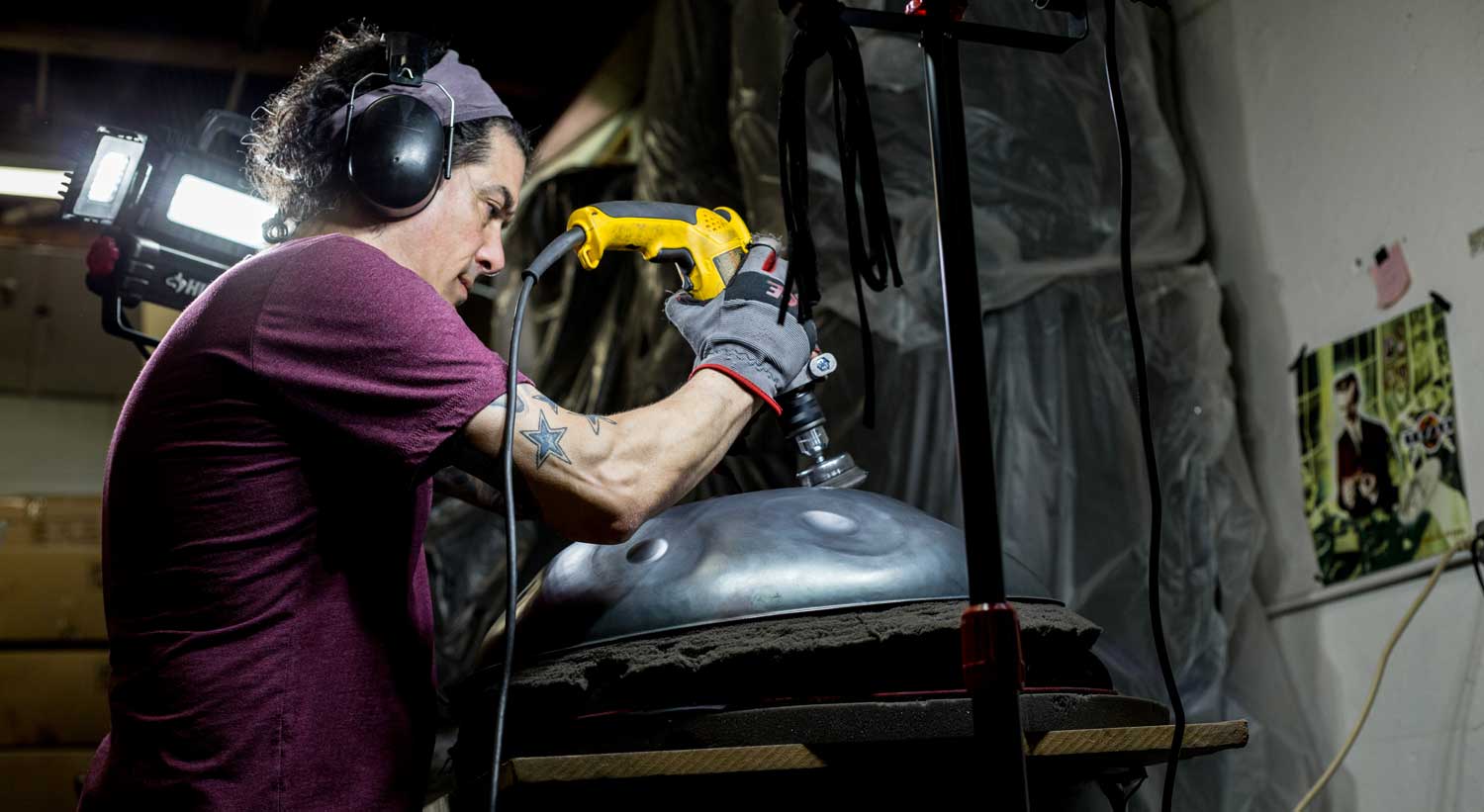LED vs Fluorescent Emergency Lighting Technology
Today’s building architecture can make us marvel at its intricacies and astound us with the technologies needed to provide comfort. The development of emergency lighting further demonstrates how buildings can digitally transform to achieve cleaner and smarter cities.
Schraft notes that “Lighting is the ideal orchestrator of smart technology; it is fixed, has a constant power source and can easily be installed without causing disruption to building occupants.”
Lighting itself will become more technologically advanced because software and services used for storing, processing and analysing the sensor data collected, this has helped emergency lighting transform to what it is today and continue to help the innovate of the industry in the future.
“As demand for smart devices increases, including lighting, the cost base will fall and the market will reach a tipping point where wholesale adoption takes place. At this point, the promise of a new industrial revolution will really take place.” – Schraft
In any study of emergency lighting, the debate on the type of lights that perform efficiently usually comes up. Some people prefer fluorescent lights while others LED lighting. However in recent times, many have concluded that the latter offers better services than the regular fluorescent.
This article will show you why LED technology has the upper hand over fluorescent technology when it comes to emergency lighting. We will also show you the benefit of using LEDs for emergency lighting.
Complete and Definitive Guide To Emergency Illumination
What is emergency illumination?
Why is emergency illumination required?
Did you know: Lighting Style has one of the best and largest range of Emergency Lights and Exit Signs In Australia!
What are the different types of emergency lights?
Maintained - a maintained emergency light is continuously on and when the power fails it switches to a battery powered emergency output.
- a maintained emergency light is continuously on and when the power fails it switches to a battery powered emergency output. Non-maintained - a non-maintained emergency light is not normally lit and activates only when the power fails.
- a non-maintained emergency light is not normally lit and activates only when the power fails. Sustained - a sustained emergency light has two lamps: one lamp is powered by the 240V mains and the other lamp is activated only only when the power fails (this type is also called Combined).
What is the difference between maintained and non-maintained emergency lights?
Which is better - maintained or non-maintained emergency lights?
Is there a benefit to using a sustained emergency light?
What class of building requires emergency lighting?
Where should emergency lighting be installed?
Where should exit signs be installed?
How big should exit signs be?
16m - between 100mm and 150mm
- between 100mm and 150mm 24m - between 150mm and 200mm
- between 150mm and 200mm 32m - between 200mm and 250mm
- between 200mm and 250mm 40m - between 250mm and 300mm
In which areas should emergency lights be installed?
Exit doors
Corridor intersections and changes in direction
Escape routes
Stairs, escalators and ramps
Different floor levels
Rooms without windows
Medium and large toilets
Firefighting equipment
Lifts
Large rooms
What is the Australian standard for emergency lighting?
2293.1 Part 1: System design, installation and operation (AS/NZS 2293.1:2018)
2293.2 Part 2: Routine service and maintenance (AS/NZS 2293.2:2019)
2293.3 Part 3: Emergency luminaires and exit signs (AS/NZS 2293.3:2018)
What is the objective of the AS 2293 standard?
How long should emergency lights be illuminated for?
Do exit signs need to be green?
Do exit signs have to have arrows?
How close to exits should exit signs be installed?
How often should emergency lights be tested?
What are the steps in planning emergency lighting?
Walk around the premises noting large open areas and potential hazards in an evacuation. Identify what route people would take if an evacuation was to occur. Evaluate what fire safety equipment and evacuation measures are in place including fire fighting and first aid equipment, fire detection and alarm systems, location of evacuation hazards, employees' understanding of escape routes and evacuation, testing of emergency equipment and high-risk areas of ignition. Create and implement a plan of improvements to existing systems and equipment, including that the emergency lighting in place is adequate and compliant. A record of the improvements made to the emergency lighting must be documented and stored in a safe location. This must include a plan for testing the lighting on a regular basis. The emergency lighting document needs to be reviewed on a regular basis.
What are the different categories of emergency lights and exit signs?
Blade exit signs
Box exit signs
IP rated (weatherproof) exit signs
IK rated (vandalproof) exit signs
Emergency downlights
Emergency oyster lights
Emergency LED batten lights
Emergency flood lights
How can I check that an emergency light is being charged?
How can I check that an emergency light is working correctly?
What is the penalty for having non-compliant emergency lights?
Corporations - $3 million penalty
- $3 million penalty Individuals - significant financial penalty and up to 5 years imprisonment
How bright should emergency lighting be?
Floor levels in general areas should have 0.2 lux minimum
Floor levels in all stairways, ramps and fire isolated passageways should have 1 lux minimum
What is the emergency lighting classification?
The classification is used to determine the light mounting height and spacing for design, installation and assessment.
Every emergency light is assessed for illumination along its transverse and longitudinal planes.
The first part of the classification is a letter: A, B, C, D or E which represents five different classes of light distribution curves.
The second part of the classification is a number from 0 to 180 which represents degrees on an axis.
This classification is then used, via a table, to determine the mounting height and spacing of the light for a given classification.
An emergency light is a battery powered light source that is designed to activate during a power outage to guide people towards the exits. Emergency lighting is mandatory for modern commercial and residential buildings.When a major power failure occurs during an emergency a building can become very dark. This makes finding the exits difficult and may be life threatening. To avoid this, exit signs and emergency lighting need to be installed inside buildings to indicate the fastest way to the exits.Non-maintained emergency lights turn on only during a power failure. Maintained emergency light illuminate continuously and continue to work during a power failure which enables them to function as both a standard light as well as an emergency light.If the area in question requires constant lighting then a maintained emergency light is better because only one light is needed. However, if the area does not need lighting then a non-maintained light is sufficient.Sustained emergency lights were developed because globes would fail after prolonged use, so using a sustained light ensured you were always sure of lighting when you needed it. Now most emergency lights are moving to LED, so sustained lights are slowly being phased out.Every class 5, 6, 7, 8 or 9 building with a floor area of more than 300m² must have emergency and exit lights.Emergency lights must be installed in all common areas, escape routes and exits of multi-residential buildings as well as government and commercial buildings that are occupied by employees, customers and the general public. Installation needs to illuminate hazards along an evacuation route such as stairs, corners and uneven paths as well as fire fighting equipments such as extinguishers and fire blankets.Exit signs must be installed above exits, at the top of staircases, balconies, above doors in the path of evacuation and where an escape path to an evacuation changes direction. Exit signs must be illuminated and be visible at all times.The height of an exit sign is determined by the maximum viewing distance from the exit sign as follows:Emergency lights must be installed at regular intervals around a building to illuminate escape paths from a building. Areas that require emergency lights include:The Australian standard for emergency lighting is AS 2293 - Emergency escape lighting and exit signs for building. This standard has three parts:The objective of the AS 2293 standard is to provide designers, installers and certifiers of emergency lighting with the relevant requirements and guidance to ensure an acceptable level of illumination for the safe evacuation of people from spaces in an emergency situation.Australian Standards AS S2293 state that exit signs and emergency exit lights must stay illuminated for a minimum of 90 minutes.Exit signs must be green with a contrast of white to green to be no less than 4:1. In addition, exit signs should use pictograms instead of the word EXIT.Exits to the left must show a left arrow and exits to the right must show a right arrow.Exit signs must be mounted not less than 2 metres and not more than 2.7 metres above floor level, or immediately above the doorway if the doorway is higher than 2.7 metres.The Australian Standard AS S2293 states that exit signs and emergency lights must be tested every 6 months by a suitably qualified person for a 90 minute power drop. In addition they must be cleaned at least once every 12 months.The various categories of emergency lights include:All exit signs and emergency lights will have a LED indicator which will be either red or green. A green indicator means that the light's battery is being charged.All exit signs and emergency lights have a test button next to their indicator. Pressing this button will temporarily put the light into its emergency mode.Having non-compliant emergency lighting is an indictable offence which carries a maximum penalty of:The Australian Standard AS S2293 requires that:The emergency lighting classification consist of a pair of letters followed by a number (such as D40) as follows:Disclaimer: this web page is provided on the basis that readers will be responsible for making their own decisions and assessment on emergency lighting and are advised to verify all statements and information with qualified emergency lighting experts. Lighting Style does not accept any liability for any injury, loss or damage incurred by use of or reliance on this information. Readers of this page are cautioned not to place any reliance on material herein.
Emergency Lights
Emergency Lighting Options

Along with exit signs, emergency lights are designed to provide adequate lighting in the event of an emergency or power failure. offers only the highest quality, UL 924 compliant emergency lights in configurations perfect for any building.
Standard Emergency Lights : The right choice for most applications, these are all hard-wired emergency lights with two heads. The primary difference is the style of the fixture, though you can also choose between tungsten, halogen, incandescent, and LED light sources.
: The right choice for most applications, these are all hard-wired emergency lights with two heads. The primary difference is the style of the fixture, though you can also choose between tungsten, halogen, incandescent, and LED light sources. Self-Testing Emergency Lights : While standard emergency lights require manual testing, usually pressing or holding down a button, these units monitor themselves and provide a visual indicator if failure occurs. Usually this means a colored indicator light will turn on or change color, but it can vary between devices, so read the spec sheets for the products for information on that particular model. Failure triggers can be a change to the AC power, battery voltage, emergency lamp connection, or charging circuit.
: While standard emergency lights require manual testing, usually pressing or holding down a button, these units monitor themselves and provide a visual indicator if failure occurs. Usually this means a colored indicator light will turn on or change color, but it can vary between devices, so read the spec sheets for the products for information on that particular model. Failure triggers can be a change to the AC power, battery voltage, emergency lamp connection, or charging circuit. Remote Capable Emergency Lights : These emergency lights can be paired with remote heads to better spread out the light without needing as many fully integrated fixtures. Remote heads are available with LED or tungsten lights and may not be compatible with all remote capable emergency lights. Check the PDFs on each product page for compatibility or call an account manager for assistance at 1-800-624-4488.
: These emergency lights can be paired with remote heads to better spread out the light without needing as many fully integrated fixtures. Remote heads are available with LED or tungsten lights and may not be compatible with all remote capable emergency lights. Check the PDFs on each product page for compatibility or call an account manager for assistance at 1-800-624-4488. Heavy Duty Emergency Lights: Common features of heavy duty emergency lighting includes a wet location rating and a higher flame retardant rating. These fixtures are frequently built with reinforced thermoplastic or die-cast steel housings to help them hold up against punishing environments or high traffic public locations.
Emergency lighting is a required safety element for any building that can be overlooked during major renovations or lighting upgrades. Don't let that happen to you; can help your building stay up to code. For assistance finding the right emergency lighting products, contact an account manager at 1-800-624-4488.


![31 Best IPTV Services for FireStick, Android TV, PC [Dec 2021]](https://www.lampsofbible.com/storage/upload/Images/_1639646173_nXrO23JGnM.jpg)





